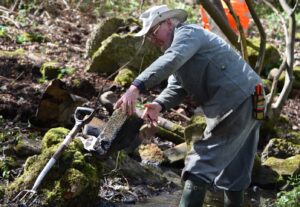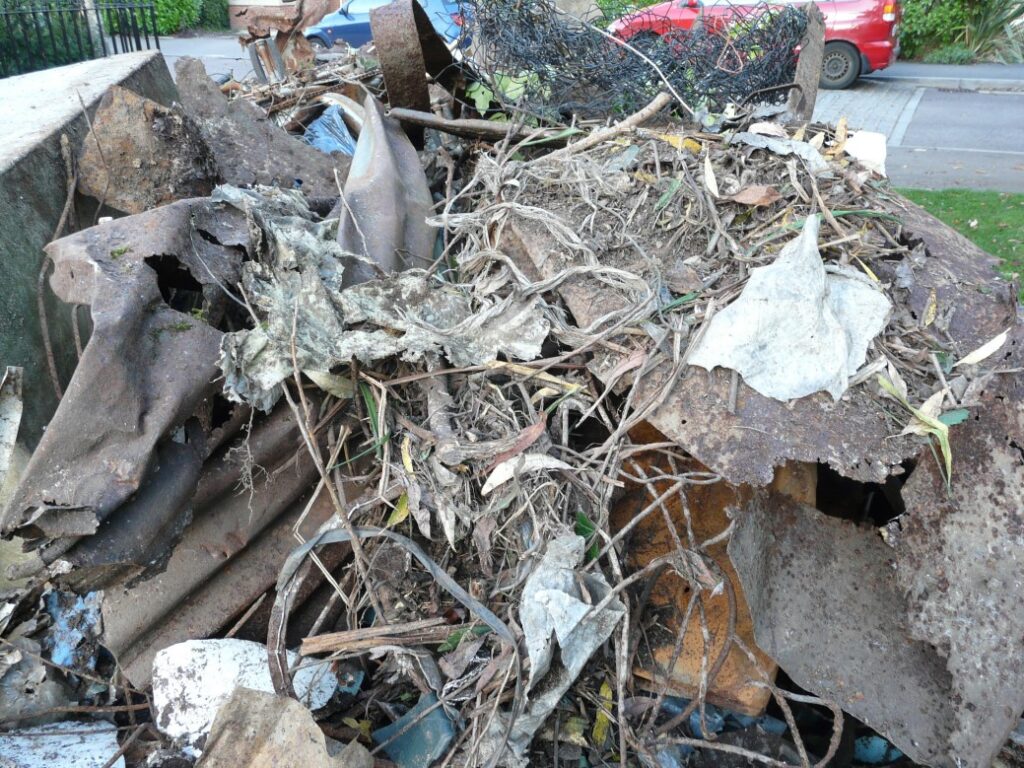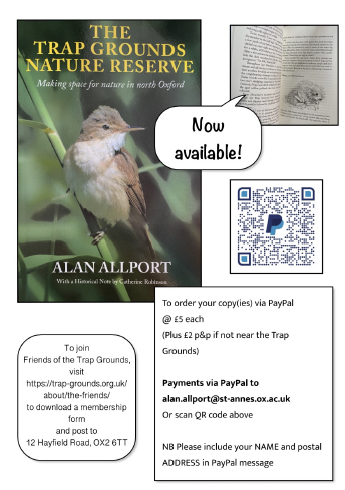Glen Williams
Book Review: The Trap Grounds Nature Reserve, by Alan Allport
The Trap Grounds is a 10-acre nature reserve in North Oxford, sandwiched between the Oxford Canal and the railway line. Twenty-five years ago this small pocket of land was the site of an abandoned rubbish dump, overgrown with virtually impenetrable thickets of hawthorn and brambles.

Today, the Trap Grounds is home to a rich and ever-growing variety of wildlife including swans, blackbirds, buzzards, robins, wrens, mallards, moorhens, herons, sparrowhawks, water voles and woodpeckers, as well as foxes and many different species of invertebrates. Six ponds have been created and a network of paths plus a boardwalk have replaced the muddy tracks. The meadows have been cleared of fallen trees and scrub, and thousands of brambles have been uprooted and replaced by swathes of wildflowers and daffodils.
Alan Allport has just published a 113-page book, The Trap Grounds Nature Reserve, beautifully illustrated by 29 of Alan’s own line drawings. The book starts with “A Brief History” of the Trap Grounds by Catherine Robinson, who in 1996 began mobilising volunteers to clear paths and glades in the woodlands and to dig up invading willows from the reed bed. She also led a five-year campaign to protect the Trap Grounds from a proposed housing development. Her efforts were ultimately successful, and the whole site is now managed by the Friends of the Trap Grounds, in partnership with Oxford City Council.
Alan’s book takes the form of a year-long diary in which he records, month by month, the seasonal changes in the living world in the Trap Grounds: encounters with its wildlife, the plants and animals living there, and the work done throughout the year by the Friends of the Trap Grounds – and many other volunteers – to conserve and enhance this precious natural resource. But the Trap Grounds’ long history as a rubbish dump still keeps cropping up. Alan writes:
“Wherever we dig – even to plant primroses – up come broken bricks and other debris, dumped on the Trap Grounds through most of the twentieth century. The twisted metal, broken glass and suchlike we generally carry off site, to be loaded eventually into a skip and taken to landfill. The dumped bricks are a different matter. We have hundreds, maybe thousands of tons of them….”

But for every problem they devise a solution:
“We decide it is time to cover some of the biggest of
these brick-piles with topsoil. We can then plant on top, and if we are successful, these ugly reminders of the Trap Grounds’ past – as an unregulated fly-tip – will be transformed into flowering green hillocks.”
(Note: it worked!)
As I read Alan’s beautifully written account of how a small group of volunteers has transformed a rubbish dump into a hugely appreciated community resource, I could not help thinking about the possible wider relevance of this experience. The Trap Grounds, it seems to me, is a kind of microcosm of the way we human beings have trashed, polluted, and degraded the natural world, bringing many plant and animal species to the brink of extinction and threatening to make large parts of the world uninhabitable.
 Alan’s book demonstrates how a small group of well informed, determined and resourceful people can reverse the degradation of a small part of their natural environment. His book should be widely read, not only as an inspirational story, but also for its wider relevance. Is it too much to hope that the story of the Trap Grounds can inspire other initiatives – not only small but also on a much wider scale – to reverse our planet’s headlong rush towards the extinction of life as we know it?
Alan’s book demonstrates how a small group of well informed, determined and resourceful people can reverse the degradation of a small part of their natural environment. His book should be widely read, not only as an inspirational story, but also for its wider relevance. Is it too much to hope that the story of the Trap Grounds can inspire other initiatives – not only small but also on a much wider scale – to reverse our planet’s headlong rush towards the extinction of life as we know it?
| Next Article |
Back to June 2022 Newsletter Main Page
Forty-Three Newsletter • Number 518 • June 2022
Oxford Friends Meeting
43 St Giles, Oxford OX1 3LW
Copyright 2022, Oxford Quakers
